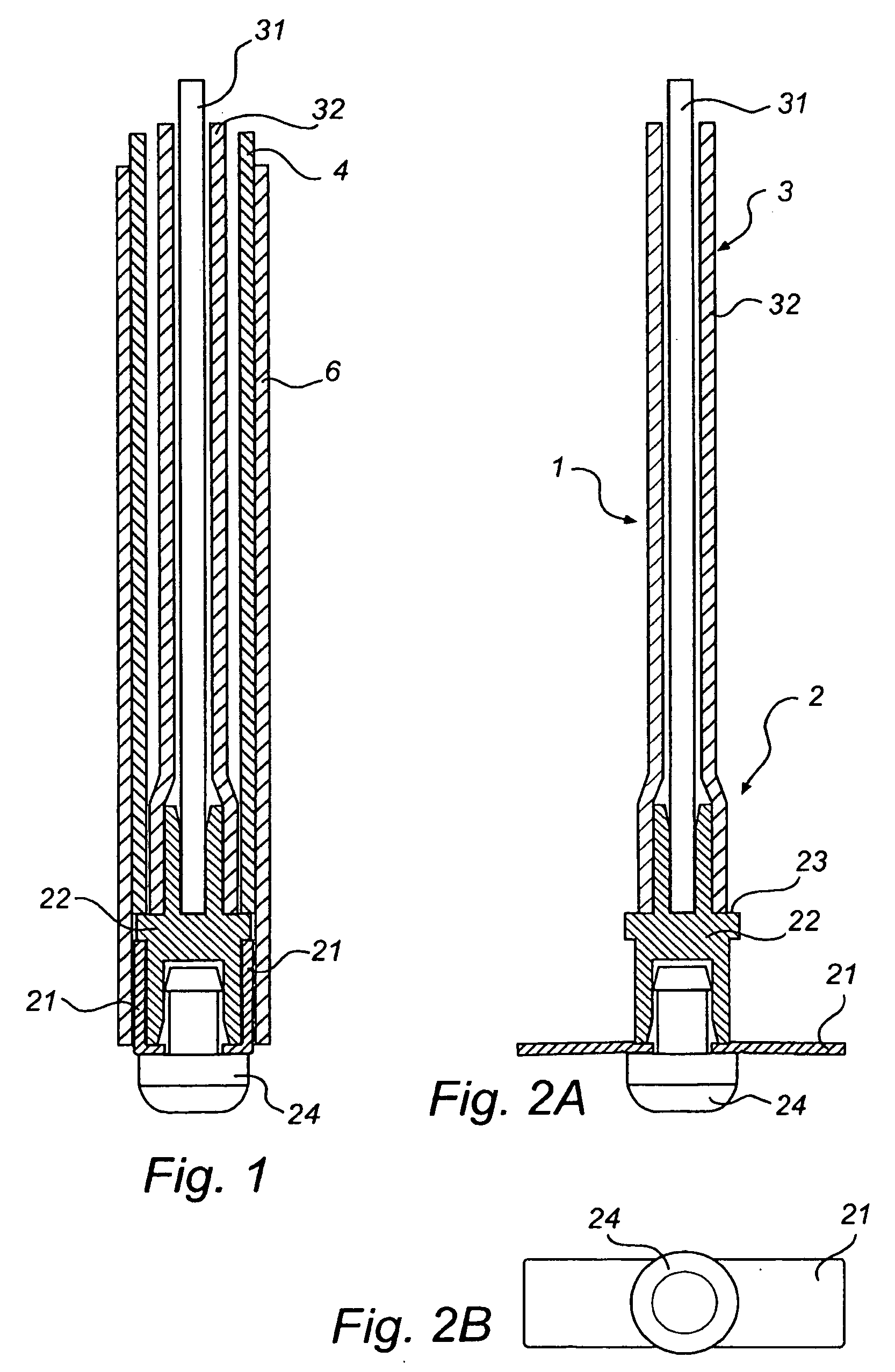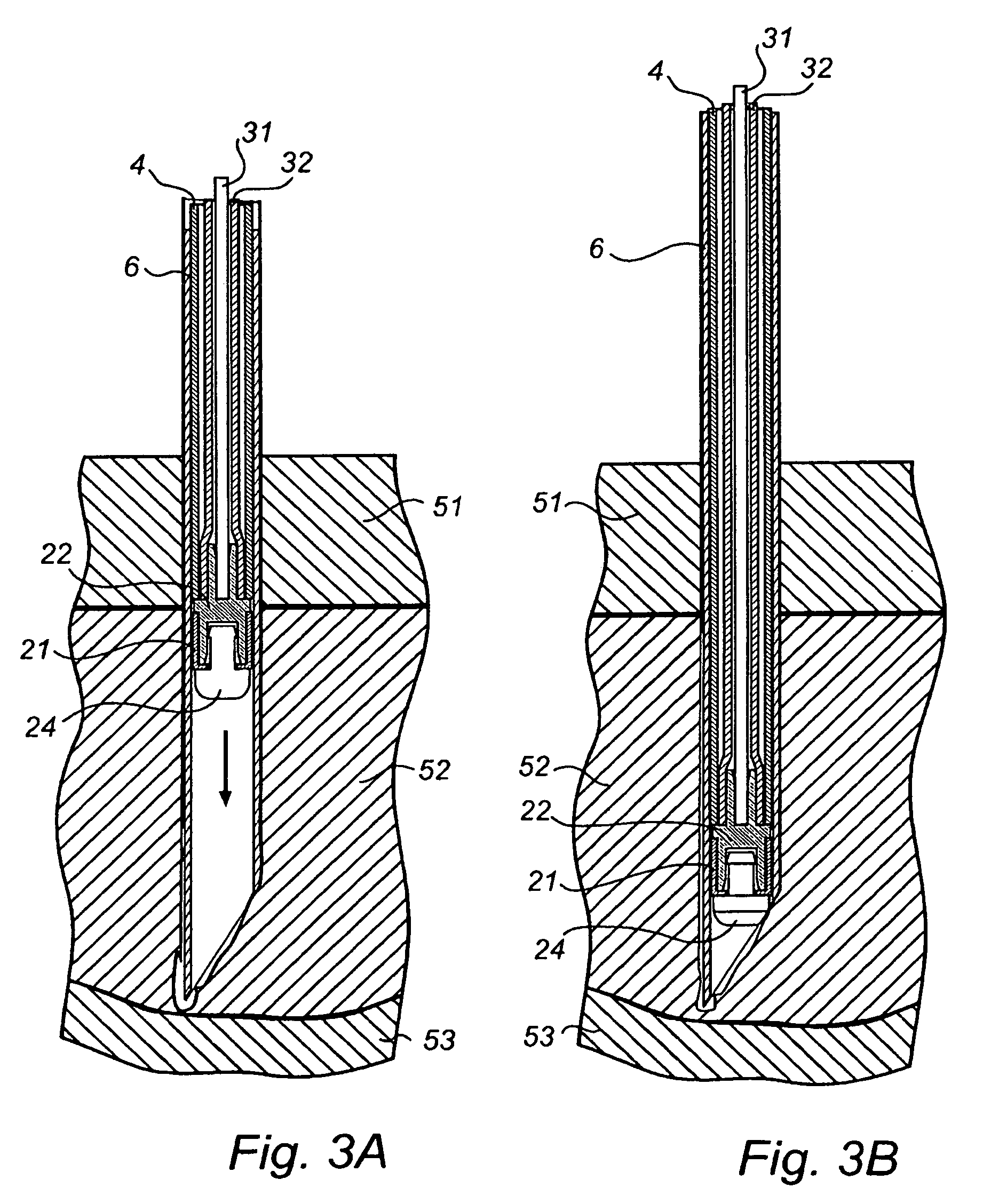Electrode for Implantation in a Living Organ and a Method for Implanting the Elecrode
- Summary
- Abstract
- Description
- Claims
- Application Information
AI Technical Summary
Benefits of technology
Problems solved by technology
Method used
Image
Examples
Embodiment Construction
[0034]In a first embodiment of the gastrointestinal electrode device according to the invention, is illustrated in FIG. 1-3. The gastrointestinal electrode device 1 comprises an electrode head 2 intended to be implanted in a stomach wall for emission or reception of electrical signals and a flexible cable 3 with an inner conductor 31 and an outer isolation layer 32. The flexible cable is connected to the electrode head for forwarding the electric signals to electronic equipment (not shown) on the external side, such as a pacemaker or measurement unit. The flexible cable is very thin and / or flexible, so as to be easily bent and folded.
[0035]The electrode head 2 comprises flexible expandable retention wings 21, arranged to automatically expand from an condition of insertion, as illustrated in FIG. 1, into an expanded condition for opposing retraction of the electrode via the aperture of insertion, as illustrated in FIG. 2, thus making the electrode attachable to the living organ. The ...
PUM
 Login to View More
Login to View More Abstract
Description
Claims
Application Information
 Login to View More
Login to View More - R&D
- Intellectual Property
- Life Sciences
- Materials
- Tech Scout
- Unparalleled Data Quality
- Higher Quality Content
- 60% Fewer Hallucinations
Browse by: Latest US Patents, China's latest patents, Technical Efficacy Thesaurus, Application Domain, Technology Topic, Popular Technical Reports.
© 2025 PatSnap. All rights reserved.Legal|Privacy policy|Modern Slavery Act Transparency Statement|Sitemap|About US| Contact US: help@patsnap.com



